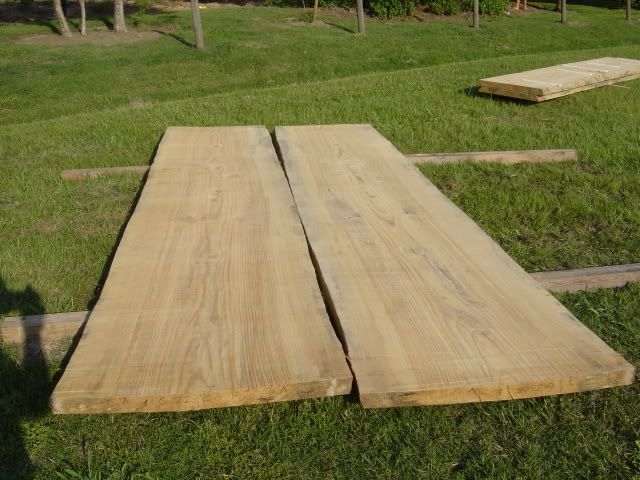The price of 40 pounds Sterling comes out at about $ 70.00 Dollars, and that is for a solid foot cube, not board length.
You can buy it cheaper if its green but not a lot cheaper, as agie says, its a good way to save yourself heaps of money buying it from someone else.
Just imagine how much lumber is cut up for logs each year, why I imagine you could feed a small country on the proceeds, best not to say too much as the IRS could get wind of things and start snooping around Heh Heh Heh.
On the roller subject, they really do work for you, the whole mill glides along with them and control is an easy affair, the whole mill turns on a dime without any strain whatsoever on the operator, rolllllllllllllllinnnng on >>>>>>>.
A two man two saw head unit, is where the real benefits come to the fore
because two saws working together take the strain off of each other, the saws themselves last a lot longer and the bar has no bearing roller nose to wear out, you just turn the bar over every hundred feet or so, and the fuel to board feet cut is much much better, because the saw are not working any where near as hard, if you use a smaller pitch bar like a 3/8" the cutting speed can be quite impressive.
And if one saw stops running you can carry on as if you had a one saw system, and on a smaller width board you can turn one saw off to save on fuel, and turn them both back on for the really big stuff.
If two people share one mill you can share the costs and laugh all the way to the bank, pool ones resorces.
I also get a real buzz from doing things with my mill, we did a job for a freind who bought a derelict barn which had three lovely straight oaks growing out of the middle of it, once he had cleared the undergrowth, we topped the trees, about sixty feet high in total, so we could fell them inside, without hitting the walls.
We then milled them into three 15" x 9"x 22' beams, and once the walls were built back up to the right height, we lifted them into place using an old A frame, block and tackle, which now hold up the upper floor of the property, if he had to go out and buy the beams and get them delivered, it would have cost him over £ 1500.00 quid, that was around fifteen years ago.
We bought the big Stihl 088 new for 850.00, I made the mill for around 120.00worth of materials, so it paid for itself in the one job, we went on to make everything else for the house, including the A section roof trusses and even a 20 foot log cabin at the end of the garden, with some spruce which was growing nearby.
What really concerns me is, all the cheaper European oak that is coming into the UK from places like Romania, Poland, and other developing countries, what the air and road miles is doing to the enviorment is just plain silly.
What I would like to do one day, when I win the Lotto, is to buy one of those wilderness plots, and build myself a summer retreat by a lake somewhere, using my own mill, dreammmmmmmmmmmm on why not.
I have just took the plunge and got a freind in Minesotta to buy me one of those Rip-Saws from KT, it will come in handy for the majority of the smaller beam sections and save the big mill for the donkey work.


























































